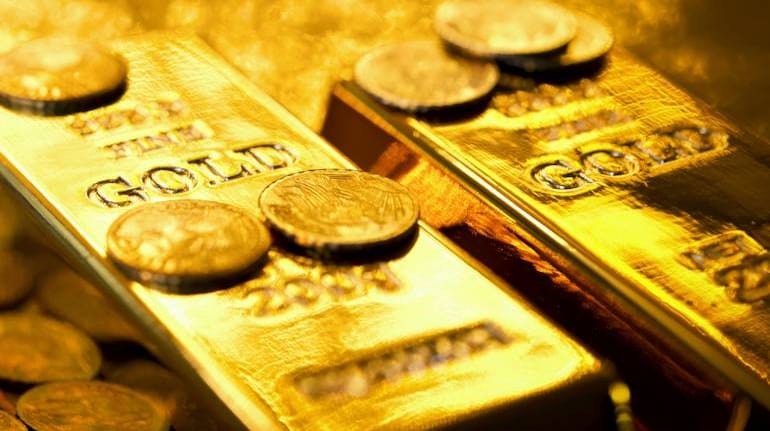



Gold has lost sheen in the last few months, as prices largely traded in a broad range, both in domestic and international markets.
Since Diwali 2020, when gold was trading at around Rs 50,000 for 10 grams, we have seen the price fall to Rs 43,000 then move back to Rs 50,000, with the precious metal now trading near Rs 48,000. Similarly, global prices, too, have remained bound in the $1,650-1,950 a troy ounce range.
The range-bound and directionless trade can largely be attributed to the lack of investor interest. With the onset of the vaccination process and easing of coronavirus restrictions, market players have shifted focus to growth-linked assets like equities and lowered their exposure in safe havens.
In commodities, too, market players have moved away from gold and silver to shift to growth-linked commodities such as crude oil and industrial metals. Weaker interest in gold is also evident from continuing ETF outflows.
Gold has also lost some of its shine amid increasing debate about monetary tightening by the Federal Reserve and other central banks. Global central banks infused huge liquidity to boost economic growth after the slump caused by the pandemic.
With economic recovery now on a stronger footing, central banks are looking at ways to normalise monetary policy.
Some central banks like that of Brazil have already started raising interest rates to ease inflationary pressure, while some like the Bank of Japan have continued to maintain support for accommodative monetary policy amid persisting risks to the economy.
The Fed has also tilted towards monetary tightening. Comments from Fed officials indicate that the criteria to start monetary tightening have been largely met and the central bank may start bond tapering later this year.
Fed officials have, however, refrained from stating that end of bond purchases will be followed by an interest rate hike. Fed projection and market expectations, however, indicate a rate hike may happen before the end of 2022.
While gold seems to have lost its mojo, there are still enough reasons to remain invested in the metal.
Firstly, virus concerns are far from over with resurgence in cases as well as uneven vaccination process, so countries may be forced to continue with some form of restrictions, which may impact economic growth.
Equity markets are still at elevated levels, however, we are seeing signs of exhaustion amid increasing challenges in the form of rising inflationary pressure, increased prospect of monetary tightening, supply-chain issues, energy crisis, labour shortages, etc.
If the equity market sees a sustainable correction, we may see some shift in investor interest towards other asset classes like gold.
Adding to gold’s appeal is a surge in inflationary pressure globally. While central banks may look at normalising monetary policy, they may take a cautious approach unless economic growth is on a stronger footing.
We expect gold to continue in a broad range, given divergent market factors at play, however, growing challenges for the global economy may increase its safe-haven appeal and support prices.
Domestic gold prices may largely continue in the Rs 45,000-50,000 range, while international prices may remain in $1,650-1,950 bracket.
Volatile silver
While gold has been stuck in a broad range, silver has witnessed much volatile trade since Diwali 2020.
In the domestic market, the price moved as high as Rs 75,000 and as low as near Rs 58,000. In the international market, silver has broadly moved in the $21-30 range.
Silver’s volatility is reflective of both challenges in gold and industrial metals sector. Gold remains supported by fear about the global economy but is struggling to build momentum amid monetary tightening expectations.
Industrial metals have been moving higher on supply issues, however, a slowdown in manufacturing activity and the concerns over the health of the Chinese economy has led to bouts of corrective moves.
Amid other factors, silver ETF investors have continued to exit the metals amid directionless trade. Silver may struggle for direction as the global growth outlook is likely to impact gold and industrial metals differently.
However, with the long-term demand outlook for silver still robust amid increasing emphasis on electric vehicles and solar energy, investors may remain invested in the metals.
We may continue to see prices moving in a broad range above $21-30 in the international market and in the Rs 55,000-70,000 in the domestic market.
Disclaimer: The views and investment tips expressed by experts on Moneycontrol.com are their own and not those of the website or its management. Moneycontrol.com advises users to check with certified experts before taking any investment decisions.
Discover the latest Business News, Sensex, and Nifty updates. Obtain Personal Finance insights, tax queries, and expert opinions on Moneycontrol or download the Moneycontrol App to stay updated!
Find the best of Al News in one place, specially curated for you every weekend.
Stay on top of the latest tech trends and biggest startup news.